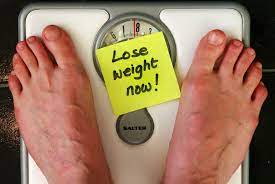Table of Contents
Healthy Meal Plan to Lose Belly Fat

Belly fat can have serious detrimental effects on your health, increasing the likelihood of chronic diseases like diabetes, heart disease and hypertension. It’s no wonder why this area of excess weight should be addressed;
Losing belly fat requires following a nutritious meal plan. This will help you maintain balance in your diet and provide your body with essential nutrients without overeating.
It is not just about looking good; to lose belly fat is crucial for your health. Excess belly fat increases the risk of chronic diseases like diabetes, heart disease, and hypertension. This guide will provide you with actionable steps to lose belly fat effectively.
1. Eat a Lot of Fruits and Vegetables
Fruits and vegetables are essential for weight management and overall health. They are rich in fiber, which aids digestion and reduces belly fat accumulation.
Why Fruits and Vegetables to Lose Belly Fat?
– They are low in calories and fat.
– They provide essential nutrients like vitamins, minerals, and antioxidants.
– They help lower blood pressure, improve lipid levels, and strengthen bone density.
How to Incorporate More Fruits and Vegetables:
– Aim for at least four and a half servings per day.
– Include a variety of colors and types to get a range of nutrients.
– Add them to every meal and snack.
2. Eat a Lot of Protein
Protein is vital for muscle growth, bone health, and weight loss. It helps you feel fuller for longer and reduces appetite, preventing overeating.
Best Sources of Protein:
– Lean meats like chicken and turkey
– Fish and seafood
– Beans and legumes
– Dairy products like yogurt and cheese
How Much Protein Do You Need to Lose Belly Fat?
– Aim for 0.7-1 grams of protein per pound of body weight.
– Include protein in every meal, especially before and after workouts.
3. Eat a Lot of Whole Grains
Whole grains are a cornerstone of a healthy diet. They are low in fat and high in essential nutrients, including fiber, which helps manage weight.
Benefits of Whole Grains:
– Lower blood pressure and cholesterol levels
– Protect against heart disease
– Promote overall good health
How to Include Whole Grains:
– Aim for at least half of your grains to be whole grains.
– Look for labels that say “whole” or “100% whole grain.”
– Include foods like oats, brown rice, and whole wheat bread.
4. Eat a Lot of Healthy Fats
Healthy fats are essential for losing belly fat. They help you feel full and support various bodily functions.
Sources of Healthy Fats:
– Nuts and seeds
– Fish like salmon and mackerel
– Olive oil and avocados
How to Balance Your Fat Intake:
– Aim for 20-35% of your daily calories from healthy fats.
– Avoid trans fats and limit saturated fats.
5. Drink Plenty of Water
Water is crucial for weight loss and overall health. It helps you feel full, reduces calorie intake, and improves exercise performance.
Benefits of Drinking Water:
– Reduces appetite and caloric intake
– Enhances exercise performance
– Flushes out toxins
How Much Water Should You Drink to Lose Belly Fat?
– Aim for at least 64 ounces of water per day.
– Drink water before meals to reduce calorie intake.
Additional Tips for Losing Belly Fat
Exercise Regularly:
– Include both cardio and strength training exercises.
– Aim for at least 150 minutes of moderate aerobic activity or 75 minutes of vigorous activity each week.
Get Enough Sleep:
– Aim for 7-9 hours of sleep per night.
– Poor sleep can lead to weight gain and increased belly fat.
Manage Stress:
– Chronic stress can lead to weight gain and increased belly fat.
– Practice stress-reducing activities like yoga, meditation, or deep breathing exercises.
– Healthy Eating Tips
– Benefits of Exercise
– Stress Management Techniques
1. Eat a lot of fruits and vegetables
Fruits and vegetables are an excellent source of a range of nutrients that aid weight management. Furthermore, they contain fiber which aids digestion and reduces belly fat accumulation.
The United States Department of Agriculture recommends eating four and a half servings of fruits and vegetables per day. To get all the necessary vitamins and minerals, it’s important to eat produce of different types and colors.
Consuming a nutritious diet that includes fruits and vegetables can reduce your risk for certain health conditions like cancer, heart disease, and stroke. A diet rich in fruits and vegetables may also help lower blood pressure, improve lipid levels, and strengthen bone density.
Another advantage of eating a variety of fruits and vegetables is their typically low caloric and fat content, particularly if they aren’t fried or cooked in oil.
Vegetables also contain nutrients that may aid weight loss. Vegetables like broccoli and cauliflower contain dietary fibre, which helps you feel full for longer and reduces appetite.
By including these foods into your meal plan, you’ll make sure to get all of the nutrients necessary for weight loss success and help reach those milestones. Plus, they offer other beneficial nutrients like antioxidants which keep your body healthy and strong.
Nuts are an nutrient-rich, low-calorie food that can increase metabolism and aid weight loss. Plus, they’re an excellent source of protein and heart-healthy monounsaturated fat; plus they reduce cholesterol and triglycerides – two key contributors to belly fat accumulation.
2. Eat a lot of protein
Protein is an essential nutrient for muscle growth and bone health. Additionally, protein plays a significant role in weight loss by helping to prevent fat re-accumulation.
A nutritious meal plan should include a variety of high-protein foods, such as lean meat, poultry, fish and beans. These sources of protein are beneficial for weight loss since they make you feel fuller for longer and suppress your appetite so that you don’t overindulge during the day.
Ideally, you should aim to consume around 0.7-1 grams of protein per pound of body weight each day. However, this number may vary depending on your age, activity level and overall health.
Researchers have demonstrated that a diet high in protein can promote weight loss without the need for calorie counting or portion control. One study revealed that overweight women who consumed 30% of their calories from protein experienced weight loss of 11 pounds over 12 weeks.
Eating protein before and after exercising can be beneficial, as it increases metabolism. Eating high-protein reduces the amount of carbs your body uses for energy, encouraging it to burn stored fat instead.
Yogurt is another excellent source of protein and has been proven to aid weight loss by suppressing your appetite. Furthermore, it contains plenty of calcium for optimal bone health benefits.
Research has demonstrated that increasing your protein intake to 15% or 20% of total calorie consumption can be highly effective for weight loss when combined with a lower calorie diet and exercise program. Studies show this combination also promotes long-term weight maintenance, reduces the risk of obesity and chronic disease symptoms, as well as helps ensure adequate nutritional balance in your body.
3. Eat a lot of whole grains
Whole grains have long been a cornerstone of healthy eating. Low in fat and packed with essential nutrients, these grains also contain fiber which may help lower blood pressure and cholesterol levels, protect against heart disease and promote overall good health.
According to the Dietary Guidelines for Americans, you should consume at least half your grains as whole grains. This translates to 6 ounces of grains daily.
Even if you choose products with “whole” listed as an ingredient, it may still be difficult to meet your daily recommended intake of whole grains. That is because many commercial grain products contain a blend of different grains which may not all be whole.
For a grain to be considered whole, its three parts – bran, germ and endosperm – must remain intact during cooking. This applies to wheat, barley, corn, rye, oats, rice and other cereal grains such as wheat.
Check the label to determine if a product is whole, or search for ingredients beginning with “whole” or “gluten-free.” Additionally, choose foods with plenty of fiber and few added sugars.
Whole grains contain B vitamins, which are essential for metabolism and energy production. Furthermore, they are rich in iron and folic acid to prevent anemia. Furthermore, the soluble fiber helps control appetite while decreasing cholesterol and triglyceride levels. Furthermore, whole grains contain antioxidants which protect against disease as well as slow down aging.
4. Eat a lot of healthy fats
For optimal belly fat loss, it’s essential to incorporate plenty of healthy fats into your diet. Fat is an essential nutrient the body needs for cell membranes, nerve tissue and hormone production; additionally it acts as fuel when there isn’t enough food available.
Your healthy fats can come from foods like nuts, seeds, fish, olive oil and avocados. Not only do these healthy fats promote weight loss by increasing metabolism and decreasing cholesterol levels but they also support a balanced gut microbiome for greater digestion benefits.
Additionally, including fat in your diet can help you feel fuller for longer and prevent overeating. It also slows the digestion of carbohydrates, helping avoid sudden spikes or dips in blood sugar that leave you feeling fatigued after meals.
If you’re trying to shed excess belly fat, it’s best to eat a variety of healthy fats and reduce your intake of saturated and trans fats. Saturated fats may increase the risk for heart disease, while trans fats have been known to lead to various other health issues.
Eating more fiber-rich foods such as fruits and vegetables is a great idea for weight loss. Not only are these vegetables low in calories but they are packed with soluble fiber that will keep you fuller for longer periods of time, but it may also aid weight loss by stimulating intestinal bacteria.
As a general guideline, aim to consume 20 to 35 percent of your daily calories from healthy fats such as monounsaturated and polyunsaturated oils, with no more than 10 percent coming from saturated fats. Eating foods rich in omega-3 fatty acids like salmon is recommended, while limiting foods high in saturated fat such as fried foods or processed meats should be limited.
5. Eat a lot of water
If you’re struggling to shed belly fat, a nutritious meal plan can be beneficial. Include foods high in fiber and low in calories into your meals for maximum weight loss benefits; the fiber helps you feel full faster and prevents overeating. Furthermore, adding plenty of water into your daily regimen will also aid weight reduction efforts.
Drinking water not only reduces appetite and caloric intake, but it can also enhance exercise performance. Furthermore, it flushes out toxins from the body.
Try to drink at least 64 ounces of water every day, and spread it out throughout the day rather than drinking it all at once.
Studies have demonstrated that people who drank water before each meal consumed 75 fewer calories at each meal, amounting to an overall reduction of 27,000 fewer calories over the course of a year!
Water is a calorie-free beverage and also helps you burn more calories, so drinking it before meals and, if possible, during meals can help maximize your weight loss efforts.
Water is also essential for proper digestion and nutrient absorption. Without enough liquid, your body cannot properly break down food or carbohydrates into energy.
Water can also aid weight loss by increasing metabolism. A recent study revealed that women who increased their water intake by just one liter daily experienced higher rates of metabolism, likely due to water keeping cells hydrated and lubricated.
Dehydration may also promote lipolysis, the process by which your body burns fat for energy. Unfortunately, the exact mechanism behind this effect remains unknown. Furthermore, dehydration can inhibit weight loss by decreasing the activity of certain enzymes within your system.
Conclusion
To lose belly fat requires a combination of a nutritious diet, regular exercise, adequate sleep, and stress management. By following these tips and making sustainable lifestyle changes, you can achieve your weight loss goals and improve your overall health.
Frequently Asked Questions
What exercise burns the most belly fat?
High-intensity interval training (HIIT) is considered the most effective exercise for burning belly fat. HIIT involves alternating short bursts of intense exercise with brief recovery periods, which can help reduce abdominal fat more efficiently than moderate-intensity continuous exercise[1][2].
How can I lose belly fat in 2 weeks?
While it’s not realistic to lose significant belly fat in just two weeks, you can start seeing results by combining a balanced diet, regular exercise (including HIIT and strength training), stress reduction, and adequate sleep. Focus on creating a calorie deficit and staying consistent with your efforts[3].
What foods burn belly fat fast?
While no specific foods burn belly fat, certain foods can support overall weight loss and fat reduction. These include high-fiber foods (like vegetables and whole grains), lean proteins, healthy fats (such as avocados and nuts), and foods rich in antioxidants. Green tea and foods high in protein and calcium may also help boost metabolism[4].
How can I reduce my tummy in 7 days?
Significant fat loss in 7 days is not realistic or healthy. However, you can start seeing some changes by reducing bloating through proper hydration, limiting salt and processed foods, increasing fiber intake, and engaging in regular exercise. Remember, sustainable weight loss takes time and consistency[5].
Will running reduce belly fat?
Yes, running can help reduce belly fat as part of an overall weight loss plan. Regular running burns calories and can contribute to a calorie deficit needed for fat loss. However, combining running with a healthy diet and strength training exercises will be more effective for targeting belly fat[6].
How long does it take to lose belly fat?
The time it takes to lose belly fat varies depending on factors such as diet, exercise routine, genetics, and starting weight. With a consistent, healthy approach, you might start seeing noticeable changes in 4-8 weeks. However, significant and lasting results typically take 3-6 months or more of sustained effort[7].
What causes big stomach in females?
Several factors can contribute to a larger stomach in females, including poor diet, lack of physical activity, hormonal changes (especially during menopause), stress, genetics, and certain medical conditions. Bloating, water retention, and weakened abdominal muscles can also play a role[8].
How can I lose belly fat without exercise?
While exercise is beneficial, you can reduce belly fat without it by focusing on diet and lifestyle changes. This includes creating a calorie deficit, eating a balanced diet rich in protein and fiber, staying hydrated, getting adequate sleep, managing stress, and avoiding processed foods and excessive alcohol consumption.
Does walking reduce belly fat?
Yes, walking can help reduce belly fat when combined with a healthy diet. While it may not be as intense as other forms of exercise, regular brisk walking can burn calories, improve metabolism, and contribute to overall fat loss, including in the abdominal area. Aim for at least 30 minutes of brisk walking most days of the week.
What drink burns belly fat overnight?
No drink can burn belly fat overnight. However, certain beverages may support overall weight loss efforts when combined with a healthy diet and exercise. These include water, green tea, lemon water, and apple cider vinegar diluted in water. These drinks can help boost metabolism, reduce bloating, and promote hydration.
Sources:
[1] Elo Health - What exercise burns the most belly fat? [2] Healthline - 7 Benefits of High-Intensity Interval Training (HIIT) [3] Medical News Today - How to lose belly fat [4] WebMD - Foods That Burn Belly Fat [5] Healthline - 20 Effective Tips to Lose Belly Fat [6] Elo Health - Will running reduce belly fat? [7] Medical News Today - How long does it take to lose belly fat? [8] Healthline - Why Is My Stomach So Big? [9] WebMD - The Truth About Belly Fat [10] Healthline - How Walking Can Help You Lose Weight and Belly Fat [11] Medical News Today - What are the best foods for weight loss?
Citations:
[1] https://uk.tryfittrack.com/blogs/weight-loss/visceral-fat
[2] https://welzo.com/blogs/weight-loss/weetabix-for-weight-loss
[3] https://timesofindia.indiatimes.com/life-style/health-fitness/weight-loss/weight-loss-5-ways-your-oatmeal-can-make-you-fat/photostory/69484165.cms
[4] https://www.livestrong.com/article/13726400-oatmeal-weight-loss/
[5] https://www.livestrong.com/article/467420-which-oats-are-good-for-losing-weight/
[6] https://www.nytimes.com/2024/04/03/well/eat/oats-ozempic-tiktok.html
[7] https://www.elo.health/answers/will-running-reduce-belly-fat/
[8] https://www.elo.health/answers/what-exercise-burns-the-most-belly-fat/


